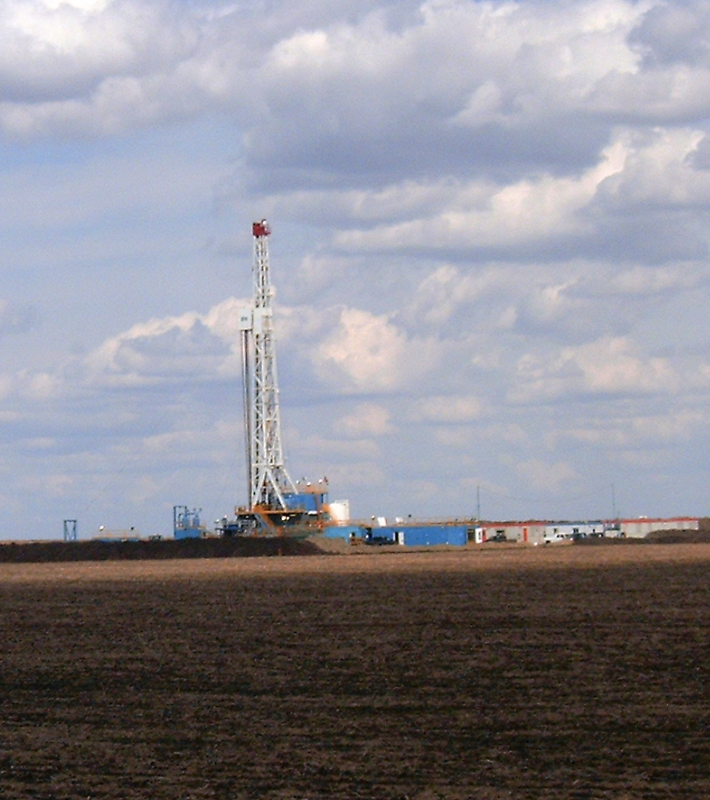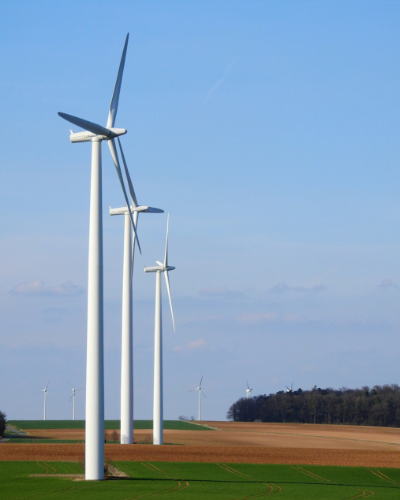We know coal is bad — it damages our environment, our health, and our economy (learn more about the harmful effects of coal here as well as the impacts of its toxic byproduct coal ash here). Clearly, we need to move beyond coal, but what about gas?
Like coal, gas (also known as natural gas, although extracting it is far from natural) is incredibly harmful to our environment, our health, and our economy. It still exacerbates climate change, pollutes the air, wreaks environmental devastation, hurts the economy, and interferes with the deployment of renewable energy sources that are ready to go. Although the gas industry and its allies insist otherwise, we need to move beyond all fossil fuels — including gas.
The negative impacts of gas
1) Burning gas emits carbon emissions that contribute to climate change. Burning gas in the United States released 581 million metric tons of carbon dioxide in 2018 — representing one-third of our electricity sector’s carbon emissions. That’s the approximate weight of 6 million blue whales. If we are to limit global warming to 1.5 degrees Celsius above preindustrial levels — the level past which climate scientists warn will trigger catastrophic and irreversible damage to our planet — carbon emissions need to be cut in half by 2030 and eliminated completely by 2050. That means there’s no time left to be burning gas — or any fossil fuel for that matter. If we burned all of the gas we’ve already extracted or are in the process of extracting, we’d far exceed the 1.5 degree Celsius limit of warming.
Additionally, switching to gas may not actually help the climate at all and could even worsen climate change and lead to increased carbon emissions because it would delay the urgently necessary transition to renewable energy sources like wind and solar, which don’t emit any carbon.
However, carbon emissions aren’t the only problem with gas. Gas is primarily methane, which is 34 times more potent than carbon dioxide in terms of trapping heat. In fact, within the first 20 years of methane circulating around in the atmosphere, it’s 87 times more potent. In the process of extracting and transporting all of this methane, inevitably some of it escapes into the atmosphere — which means it contributes to greenhouse gas emissions and heats our planet even when it’s not burned for energy. The EPA estimates the methane leak rate is 1.4 percent. Some researchers argue this underestimates the true amount of leakage and place it at 2.3 percent or even higher.
2) Gas still pollutes the air with other harmful substances. Aside from exacerbating climate change, burning gas releases air pollutants like nitrogen oxides (NOx) that cause significant health and environmental problems. While NOx is damaging on its own — causing coughing, wheezing, asthma attacks, reduced lung function, and respiratory inflammation — it also reacts with other chemicals in the air to form ozone. Breathing in ozone causes similar health problems in addition to increasing the risk of respiratory infections, arrhythmias, heart attacks, and premature death, and it worsens the symptoms of other chronic lung diseases like COPD. Ozone also damages the leaves of plants, harming forests and grasslands and reducing crop yields. While the transportation sector emits the most NOx, gas power plants still release a great deal of it — some power plants release more than a hundred tons of it each year.
 3) Gas means more fracking. The boom in cheap gas was fueled by the controversial practice of hydraulic fracturing — aka fracking — which involves extracting gas from hard-to-reach shale deposits and constructing a web of pipelines to transport it around the country. As of 2015, fracking provides two-thirds of all gas produced in the U.S. — and that number is growing rapidly. In this process, fossil fuel corporations blast open underground shale rock formations with water, sand, and toxic chemicals to unleash massive quantities of gas. This process pollutes our air and water with harmful substances like benzene and other carcinogens — leading to respiratory and cardiovascular disease, neurological problems, cancer, and birth defects. Fracking can even lead to induced earthquakes and flammable tap water (watch this video of a woman taking a match to her kitchen faucet). Fracking also releases methane into the atmosphere, which, as previously discussed, is a greenhouse gas that is more than 30 times as potent as carbon dioxide. Learn more about the basics of fracking by checking out this Sierra Club Fracking 101 Video.
3) Gas means more fracking. The boom in cheap gas was fueled by the controversial practice of hydraulic fracturing — aka fracking — which involves extracting gas from hard-to-reach shale deposits and constructing a web of pipelines to transport it around the country. As of 2015, fracking provides two-thirds of all gas produced in the U.S. — and that number is growing rapidly. In this process, fossil fuel corporations blast open underground shale rock formations with water, sand, and toxic chemicals to unleash massive quantities of gas. This process pollutes our air and water with harmful substances like benzene and other carcinogens — leading to respiratory and cardiovascular disease, neurological problems, cancer, and birth defects. Fracking can even lead to induced earthquakes and flammable tap water (watch this video of a woman taking a match to her kitchen faucet). Fracking also releases methane into the atmosphere, which, as previously discussed, is a greenhouse gas that is more than 30 times as potent as carbon dioxide. Learn more about the basics of fracking by checking out this Sierra Club Fracking 101 Video.
Beyond the health risks, fracking is also environmentally destructive. It wastes enormous quantities of water — billions of gallons are mixed with chemicals and then injected into the ground, which adversely affect local waterways. Fracking also necessitates clearing forests and wilderness and replacing it with desolate industrial wastelands — fragmenting the habitats of important species of animals and marring beautiful landscapes.
4) New gas plants “lock-in” carbon emissions. At a time when we urgently need to switch to renewables, building new gas plants and infrastructure will reinforce our dependence on carbon-spewing fossil fuels for decades to come. Building new plants is time-consuming and expensive, so fossil fuel corporations and investors plan for these plants to last decades — sometimes even half a century. This long lifespan is a major problem because we need to cut our carbon emissions in half by 2030 and eliminate them completely by 2050 if we are to keep warming below 1.5 degrees Celsius. If corporations build new gas plants today, these plants will continue to burn fossil fuels for decades and will “lock-in” carbon emissions — something we cannot afford to do. Closing them early is costly, and unfortunately, these costs will likely fall on energy consumers. Gas is not a sound investment.
The price of renewable energy is also continuing to plummet, easily out-competing coal and now beginning to challenge gas. This trend, coupled with future regulations, makes it increasingly likely that gas plants could become “stranded assets” — resource investments that have become unprofitable prematurely (before their originally anticipated decommission date). Unfortunately, already up-and-running gas plants will often continue to run at a loss rather than shut down, meaning even cheap renewables might not be able to force some gas plants into early retirement, making our work as advocates even more difficult. It just makes far more sense to not build these gas plants in the first place.
5) Gas plants disproportionately impacts Black, Brown and Indigenous communities. Fossil gas is a danger to all communities, risking public health, environmental devastation and climate disruption. Building new gas infrastructure is a particular danger to communities of color, who bear a disproportionate burden from pipeline construction and the other consequences of fossil gas. Building out new fossil gas infrastructure would lock the country into a fossil fuel commitment for decades to come. The construction of more gas plants would have devastating consequences for our communities and the climate. Check out this map to see all proposed and existing gas plants and pipelines as well as those terminated since 2017.
Renewable energy is ready!
One argument that has been made time and time again is that renewables — while ultimately preferable — are not yet economical, reliable, or feasible enough to implement, and that, in the meantime, gas is necessary to provide the country with a stable supply of energy. While this may have been true a decade ago, it no longer is the case. Renewables are now considered the cheapest source of energy, according to several different sources.
Thanks to technological improvements in battery storage and progress in grid design, renewables are able to outperform fossil fuels. Now is the time to cast aside fossil fuels, including gas, and embrace renewables. For more information about renewable energy, check out our page about it here.
Gas is a fossil fuel that harms our health and environment by spewing out pollution and exacerbating climate change. Plus, it’s becoming increasingly more expensive than renewable energy. The science is in, and it’s clear: we need to move beyond all fossil fuels and transition to renewable sources of energy as soon as possible.
